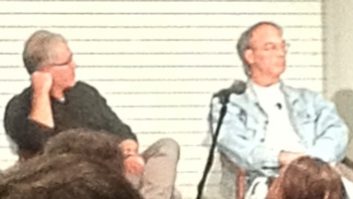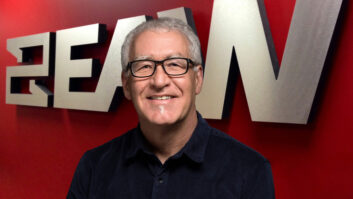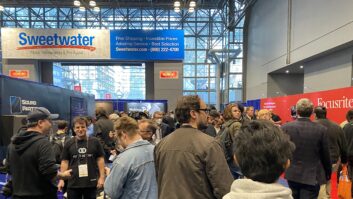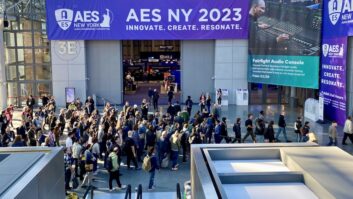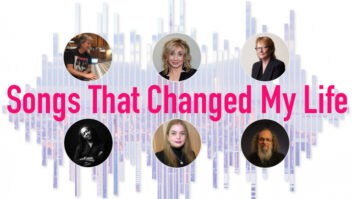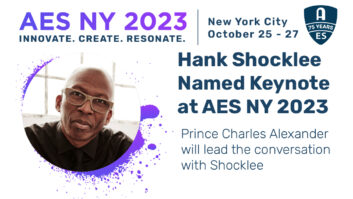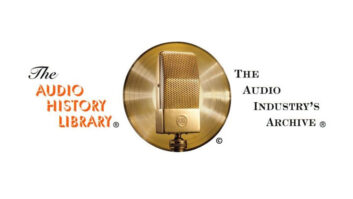Robert Scovill (left) and Dave NataleOne of the most intriguing live sound events at the AES Convention this year was the meeting of FOH minds as two legendary concert engineers took the stage to talk about their careers, views and lessons learned while manning the mixing desk. Both men spoke from wide-ranging, hard-won experience, as Robert Scovill has mixed for the likes of Tom Petty and the Heartbreakers, Matchbox Twenty, Def Leppard, Rush, Prince and a host of others, while Dave Natale has manned the desk for the Rolling Stones, Fleetwood Mac, Tina Turner and Lenny Kravitz, among a long list of names. The result was a rollicking, good-natured discussion that explored different views and takes on the same work.

Early on, the engineers were asked what their approaches to mixing were. Scovill proffered, “It’s the classic question: ‘How do you get a bass drum sound?’ and my response is always the same: ‘What kind of music is it?’ Are there certain things that work for rock music? Absolutely. Do I do them over and over again when I’m mixing rock? Absolutely. If I’m mixing jazz, be it traditional jazz or contemporary jazz, no, because it’s an entirely different construction set. With Jazz, I don’t even start with the drums; I start with the standup bass, because that’s where the swing is. It’s great to be able to operate the technology, but you have to understand the music that you’re trying to mix.”
Natale countered, “I mix for personal enjoyment. I make the drums sound the way I want them to sound, and that’s how they sound. Hopefully that works, and it seems to have so far. It’s not to say it’s right or wrong. Fortunately, there’s no rulebook in audio or I’d have been tossed a long time ago.”
One point that both agreed on was that engineers need to show confidence in their mixes and abilities. “All the guys who are successful doing what we do [are examples that] you have to be able to do it to a point that you believe in what you’re doing, and let the chips fall,” said Scovill. “If you start trying to mix for the producer or the lead singer’s wife standing behind you, you’re done.”
“I agree 100 percent,” added Natale. “I like to think I do what’s best for my client. Whether you’re good or not is someone else’s perception. As long as one more person thinks you’re good than thinks you’re bad, and you keep getting calls, then you are good. It has nothing to do with if you’re ‘good’ or not. What’s the measure of good?”
A discussion of the challenges working in the digital realm versus working in analog territory was aided by the engineers’ individual backgrounds. In recent years, Scovill has been Avid’s senior market specialist for live sound, while Natale tends to prefer analog desks (as an example, though certainly versed in digital consoles, he mixed the Rolling Stones’ most recent stadium tour on a trusty pair of Yamaha PM4000s).
Scovill alluded to the modern use of plug-ins to replace racks and racks of outboard gear. “We went through a period in the ’80s and ’90s where FOH positions were getting enormous, and they had enough processing in them to compete with any studio. We had to come up with another way to manage all this technology, and digital gives us a way to do that, with plug-in architectures and so on. Couple that up with the fact that we can now do things with plug-ins, like have processing at our disposal that we would never even dream of before. We’ve never had the tone-shaping possibility of a Pultec EQ in live sound, yet with plug-ins, we can. I don’t have to call Dave Shadoan at Sound Image and say, ‘Dude, I need 12 Pultecs on this tour’ and have him hang up the phone laughing.”
Natale has always taken a “less is more” approach when it comes to outboard gear, joking, “A long time ago, I thought the racks looked cool, so I had a lot of stuff, but I didn’t really use any of it. The last time I went out, my effects rack had five channels of noise gates and I had a PCM91, that I didn’t have on for 90 percent of the gigs. Whatever works. I’ve found what worked for me, and I will keep using it. I know what a Shure SM58 sounds like on a vocal, so I’m going to use it until there’s no more SM58s.”
While Natale prefers analog gear, he’s the first to point out that taking an “analog-only” stance is foolhardy: “When I started to mix for MTV in 2000 or so, they asked, ‘You know how to use a PM1D?’ and I said, ‘Oh yeah, sure.’ I hung up, called Clair Brothers and said, ‘Holy smokes, how do I do this?’ So you better learn how to use everything or you’re going to be out of work. You can just do analog and not be employed much, or you can learn everything. It’s not practical to not know everything.”
AES
aes.org

